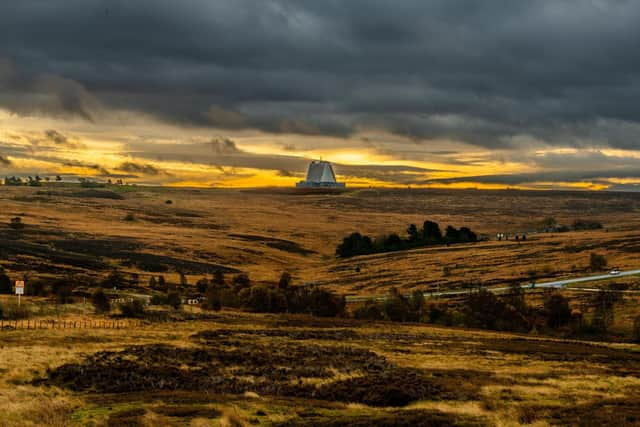Wild Isles Freshwater: First rare bat lek filmed in North York Moors using high-speed cameras on fourth episode of David Attenborough’s BBC One wildlife series
The fourth episode of Wild Isles Freshwater will take viewers on a journey with David Attenborough from source to sea following the course of our freshwater as it travels through our landscapes. Throughout the episode the audience will meet a host of wildlife that lives in, on and around our rivers, lakes, ponds and lochs including the elusive bat lek in the North York Moors.
The scenes unveil the crucial role that water plays in supporting wildlife of all kinds; determined Atlantic salmon battle their way upstream in one of the greatest migrations on the planet. Beavers slow the flow with their expert dam-building, spiders become deadly assassins, millions of mayfly have mere days to live, and in shocking new behaviour caught on camera. An unlucky raft of young toadlets has to cross a ‘killing zone’ patrolled by carnivorous leeches.
Advertisement
Hide AdAdvertisement
Hide Ad“Here in Britain and Ireland, we have some of the loveliest rivers and lakes in the world. From the lochs of Scotland to the waterfalls of Wales,” David Attenborough said.


“From the great Shannon River in Ireland, to small, intimate chalk streams. But today, less than half of our rivers and lakes are in good health for nature.”
The episode will air on Sunday, April 2, 2023 at 7pm on BBC One and iPlayer and will feature stunning landscape views of the moors in Yorkshire with a focus on the rare species of bat. Leks are clusters of sexually displaying territorial males at a common display ground; among all mating processes known from bats, ‘lek’ is the rarest recorded.
It is believed that the lek captured in this episode is the first ever filmed, using high-speed infra-red cameras. The scenes capture a group of males of different species coming together at night and flying in circles in an attempt to impress females.
Advertisement
Hide AdAdvertisement
Hide AdWild Isles producer, Chris Howard, talks about the filming of the bat lek: “Filming the bat swarm has been on my radar for years. Professor John Altringham is one of the leading bat experts in the British Isles and I had worked with him before, so when I started on Wild Isles, I called him up to discuss potential bat ideas.
“He had discovered the swarming site many years before and thought there was a good chance we might reveal what was happening in a detailed and visually attractive way. We used a high-speed infra-red camera usually used for scientific research - this was one of its first forays into wildlife filming so using it was a bit of a punt.
“To make it work, we rigged up the swarm site with a lot of infra-red lights (we have to use infra-red as the bats are disturbed by white light), set the camera up and settled down to wait with bat detectors spread around at crucial points.
“By 11pm there were only a few bats circling , but slowly numbers started to build and suddenly around midnight the detectors erupted and once we turned the camera on, the arena was full of around 15-20 bats.
Advertisement
Hide AdAdvertisement
Hide Ad“We set to work and cameraman Mark Payne-Gill was soon getting his eye in. Filming the bats in the pitch black when you can only see them through camera, and when they dance around constantly, was an almost impossible task and to this day I have no idea how he managed to get most of the shots he did.
“The rest of us rushed around in the dark, tripping over ourselves as we furiously adjusted the lights rigged in the trees and on the steep slopes and changing batteries which the lights went through at an incredible rate. Sadly, we only really had three nights with good numbers as the bats are very sensitive to wind, rain and temperature - so even though the shots we got show the swarm like it has never been seen before, it still feels like unfinished business and I would love to go back and try again.”
Comment Guidelines
National World encourages reader discussion on our stories. User feedback, insights and back-and-forth exchanges add a rich layer of context to reporting. Please review our Community Guidelines before commenting.
